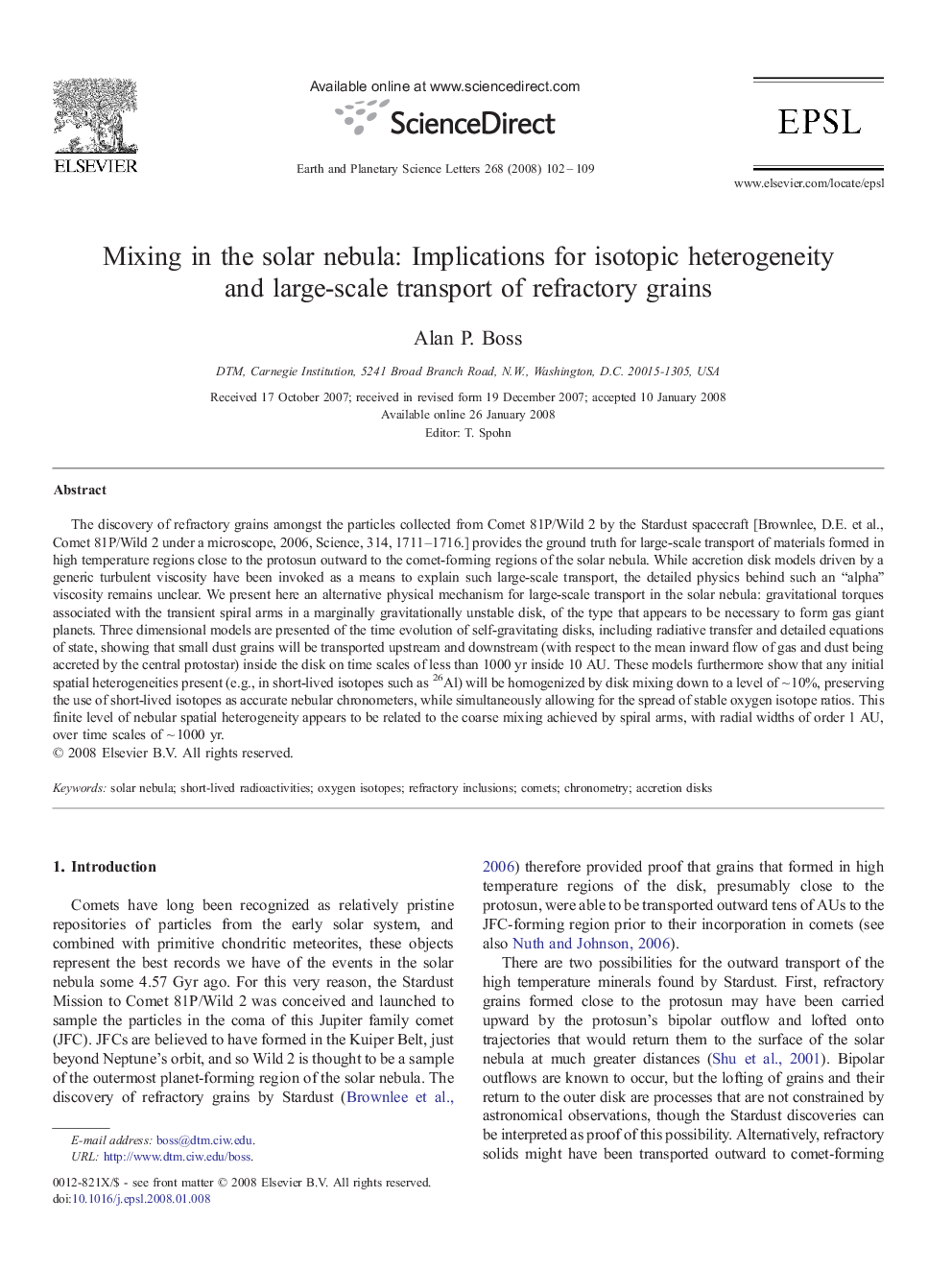| Article ID | Journal | Published Year | Pages | File Type |
|---|---|---|---|---|
| 4679750 | Earth and Planetary Science Letters | 2008 | 8 Pages |
Abstract
The discovery of refractory grains amongst the particles collected from Comet 81P/Wild 2 by the Stardust spacecraft [Brownlee, D.E. et al., Comet 81P/Wild 2 under a microscope, 2006, Science, 314, 1711-1716.] provides the ground truth for large-scale transport of materials formed in high temperature regions close to the protosun outward to the comet-forming regions of the solar nebula. While accretion disk models driven by a generic turbulent viscosity have been invoked as a means to explain such large-scale transport, the detailed physics behind such an “alpha” viscosity remains unclear. We present here an alternative physical mechanism for large-scale transport in the solar nebula: gravitational torques associated with the transient spiral arms in a marginally gravitationally unstable disk, of the type that appears to be necessary to form gas giant planets. Three dimensional models are presented of the time evolution of self-gravitating disks, including radiative transfer and detailed equations of state, showing that small dust grains will be transported upstream and downstream (with respect to the mean inward flow of gas and dust being accreted by the central protostar) inside the disk on time scales of less than 1000Â yr inside 10Â AU. These models furthermore show that any initial spatial heterogeneities present (e.g., in short-lived isotopes such as 26Al) will be homogenized by disk mixing down to a level of ~Â 10%, preserving the use of short-lived isotopes as accurate nebular chronometers, while simultaneously allowing for the spread of stable oxygen isotope ratios. This finite level of nebular spatial heterogeneity appears to be related to the coarse mixing achieved by spiral arms, with radial widths of order 1Â AU, over time scales of ~Â 1000Â yr.
Related Topics
Physical Sciences and Engineering
Earth and Planetary Sciences
Earth and Planetary Sciences (General)
Authors
Alan P. Boss,
